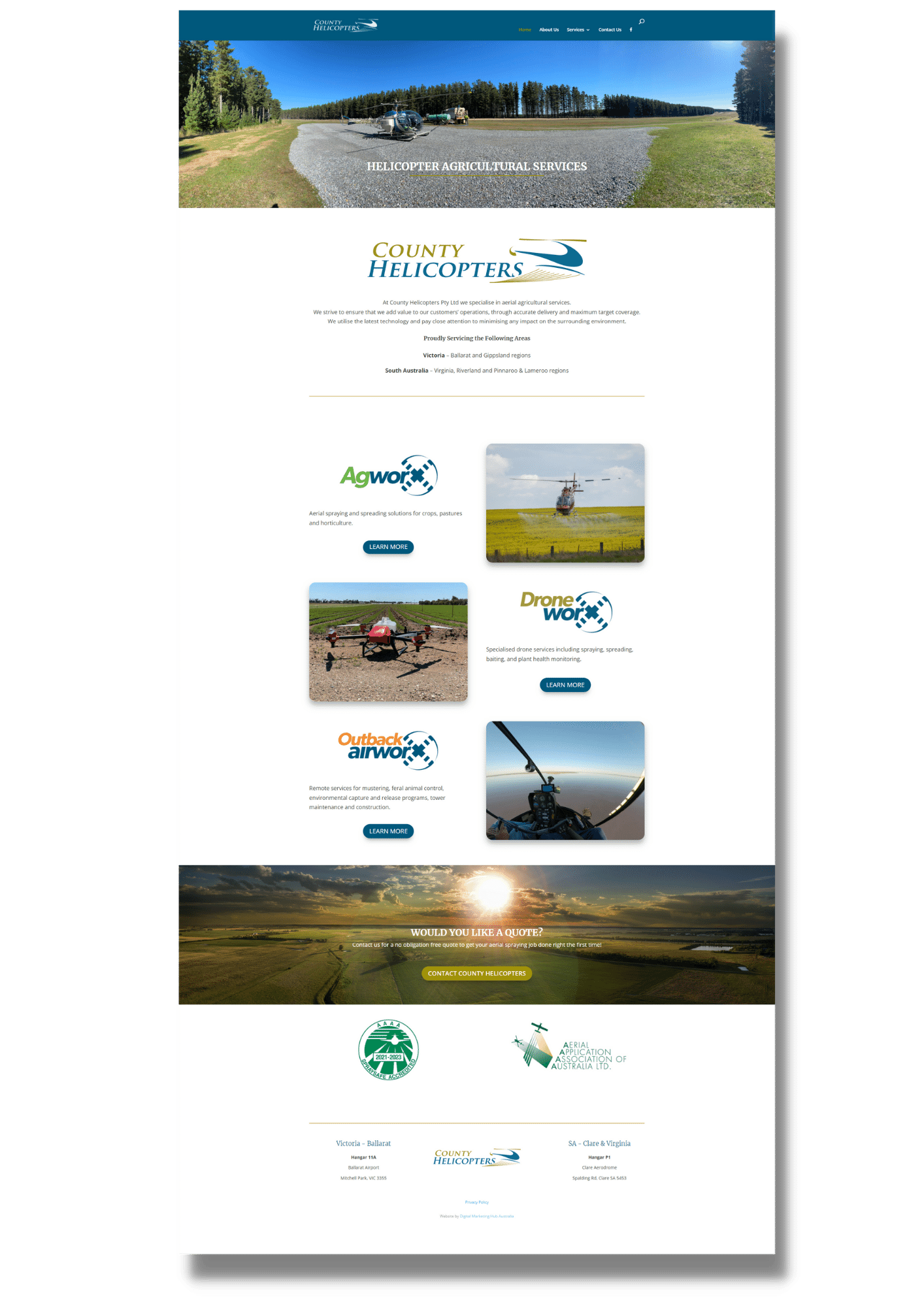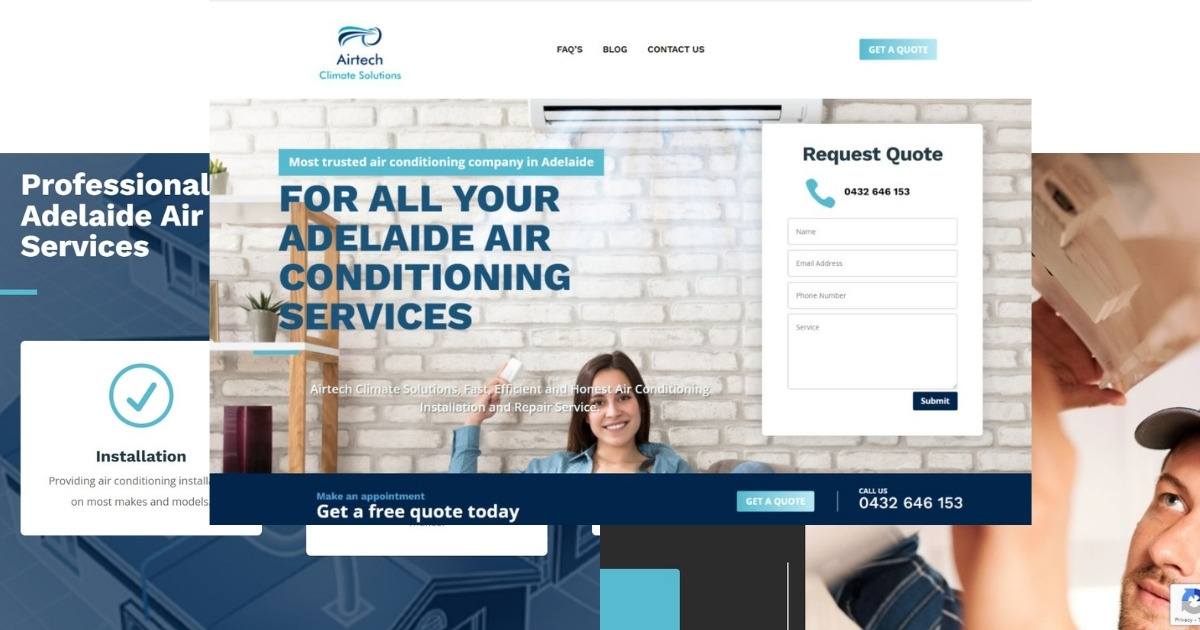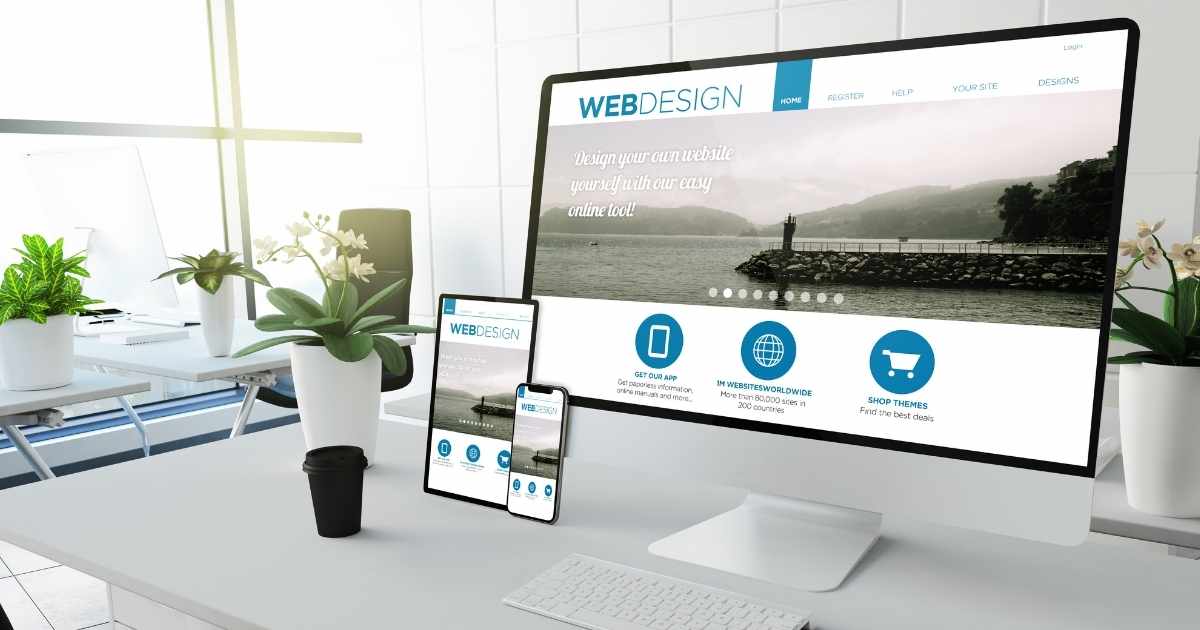Many business owners approach us with the notion that their website requires only a minor refresh. They’ve had their website for several years, and it no longer aligns with their brand, feels outdated, loads slowly, and simply looks old. However, upon closer examination, we often find that what they truly require is not merely a refresh but a comprehensive website redesign.
If you’re contemplating updating your website, we invite you to explore our blog to discover whether a refresh suffices or if your situation calls for a complete and transformative website redesign.
Let’s start by looking at what is a website refresh?
A website refresh, or makeover, is the process of updating and improving an existing website to enhance its overall appearance, functionality, and performance. This is typically done to keep the website up to date, align it with current design trends, and provide a better user experience. Here are the key aspects of a website refresh:
Design Enhancements
Updating the overall design to make it more modern, visually appealing, and aligned with current design trends. Revising colour schemes, fonts, and styling to ensure consistency with your brand. A website refresh may also involve aligning the website with the organization’s current branding guidelines, ensuring consistency in visual elements and messaging.
Content review and Search Engine Optimisation
Reviewing and revising existing content for accuracy, relevance, and freshness. Adding new content, such as blog posts, articles, or updated product listings. Optimizing content for SEO to improve search engine rankings.
Improving User Experience
Improving the overall user experience is a fundamental goal of a website refresh. This includes making sure that visitors can easily complete their intended tasks, such as filling out forms or making purchases, without encountering obstacles or frustration. A website refresh might involve simplifying the menu structure, creating clearer call-to-action buttons, and optimising the placement of important information to make it easier for visitors to find what they’re looking for.
Mobile Responsiveness
With the increasing use of smartphones and tablets, ensuring that the website is mobile-responsive is essential. A website refresh often includes making sure the site looks and functions well on a variety of devices and screen sizes.
Performance
Improving website loading times by optimizing images, scripts, and code. Addressing any issues that may be slowing down the site’s performance.
Security
Updating and maintaining security measures is crucial to protect the website from potential threats. This may involve implementing SSL certificates, updating plugins and themes.
Website Refresh Client
Below is an example of a website refresh for one of our Queensland Website Design clients. There current website needed updated content and many new elements added to enhance user experience. It was decided a refresh was sufficient as their current website has a good page builder and overall site structure was good.
OBJECTIVE: Improve user experience, showcase all of Rainbow Beach Surf Life Saving Club services.
ACTIONS: Call to action buttons added, Weekly Meal Specials slider, Easy to update What’s On section, Gallery and Customer Reviews added. Each page was updated throughout the website to enhance user experience and website conversions.

What is a website redesign?
A website redesign is the process of making substantial changes and improvements to an existing website to enhance its overall appearance, functionality, and user experience. It involves revising various elements of the website, including its design, content, structure, and often its underlying technology. The primary goal of a website redesign is to ensure that the website remains relevant, effective, and aligned with the evolving goals and needs of the business or organization it represents. A website redesign would quite often involve:
Complete Design Overhaul
Updating the website’s visual design, including layouts, colour schemes, typography, and imagery, to make it more modern, visually appealing, and aligned with the brand’s identity. This would involve a NEW design, and quite often an updated page builder or new website platform.
Content Review and Optimization
Evaluating and revising existing content for accuracy, relevance, and clarity. New content may also be added to improve the overall user experience and convey up-to-date information.
Your website navigation and user experience would be improved. Ensure your website is search engine optimisations and mobile responsive.
Why would I need a redesign instead of a website refresh?
Opting for a website redesign over a refresh is crucial when your current website no longer aligns with your evolving objectives, brand identity, or the expectations of your audience. While a refresh can address surface-level issues and minor enhancements, a comprehensive redesign delves into more profound structural and strategic considerations.
First and foremost, if your website’s core functionality is outdated or inadequate, a redesign is the best solution. This includes situations where your website relies on an outdated platform that’s challenging to update, or if it’s built with complex code that only a developer can decipher. In such cases, a redesign allows for a more modern and user-friendly architecture.
If you’re using a theme or template with limitations that hinder your website’s growth, it’s essential to recognize the potential constraints of a mere refresh. Transitioning to a modern platform and adopting a flexible page builder often proves to be a more sustainable long-term approach.
Furthermore, if your business has undergone rebranding efforts, it’s crucial to ensure that your website mirrors your new brand identity and messaging. Trying to accomplish this within the confines of an outdated platform may limit your ability to showcase your refreshed branding effectively. In these scenarios, a comprehensive redesign not only breathes new life into your website but also aligns it seamlessly with your evolving brand and goals.
Client Case Studies
The York Beachfront Holiday Apartments
Below is an example of one of our Cairns Web Design Clients. There current website needed an overhaul and it was decided a full redesign was the best option because the existing website was using an outdated page builder that was not easy to update and not good for the websites longevity.
OBJECTIVE: Improve user experience, allow owners to be able to easily update website content themselves. Update all content to actively reflect brand.
ACTIONS: New website page builder implemented. Updated all website branding, ensuring consistency through website. All page layouts were improved and all content updated. New pages added.

Dare Waxing and Tanning
Objective: Improve search engine rankings and user experience.
Outcome: We redesigned Dare’s website to create a more modern feel and match their existing branding. While doing so, we improved the site structure and user experience, ensuring CTAs were clear and the booking process was streamlined. Their Cairns waxing and tanning salon was also showcased on the homepage, creating greater awareness of all of the services/products they offered. Existing content and urls were retained where appropriate to avoid losing any current ranking. Page content was expanded through FAQs and all content was optimised.

Original Cairns web design

New Cairns web design
County Helicopters
County Helicopters, an Adelaide based aerial agriculture company, recently had their site appearance improved, however the website was built on a platform that was not user friendly and not accessible by any of their staff.
Objective:
To retain the current Adelaide website but have it on a platform where they could manage aspects of the site when needed. Improve SEO rankings in the local Adelaide region.
Outcome:
As the customer was happy with the appearance of their current site, we focussed on ensuring the site functionality was improved and built on a platform that staff could be trained in using. We built their new site on Wordpress using the page builder DIVI. This is a user-friendly page builder with drag and drop features, making it very easy for businesses to update their own site. We also implemented additional pages to showcase all services and ensured their website was optimised for SEO in both Adelaide and Victoria regions.
Find out more about Digital Marketing Hub’s Adelaide SEO solutions.

Airtech Climate Solutions
Airtech Climate Solutions is an Adelaide based air conditioning installation, service and repair business. The website was initially built on the Wix platform, however without an effective SEO strategy for improved website rankings, the site was not creating or converting any leads into tangible sales.
Objective:
To create and modern Adelaide website that converts traffic into paying customers by improving the overall website appearance and structure and implementing an effective search engine optimisation strategy.
Outcome:
Airtech Climate Solutions has increased their website specific sales in the Adelaide region through an effective SEO campaign, incorporating keyword placement and calls to action throughout their website. Discover more about Digital Marketing Hub’s Adelaide web design solutions.

Further Considerations
A website refresh and a website redesign are both processes aimed at improving a website, but they differ in terms of the extent of the changes and the goals they seek to achieve. Here are the key differences between a website refresh and a website redesign:
Website Refresh:
- Minor Changes: A website refresh involves making relatively minor updates and improvements to an existing website. These changes are typically cosmetic and focus on improving the website’s visual appeal, user experience, and performance.
- Preservation of Core Elements: In a refresh, the core elements of the website, such as its structure, content, and overall branding, remain largely intact. The goal is to enhance what’s already there rather than starting from scratch.
- Quick and Cost-Effective: Refreshing a website is often quicker and less costly than a full redesign because it doesn’t require a complete overhaul of the site’s architecture or content.
- Targeted Changes: Changes in a website refresh are usually targeted at specific areas that need improvement, such as updating the design, optimizing for mobile devices, or improving site speed.
Website Redesign:
- Major Overhaul: A website redesign involves a more extensive and comprehensive overhaul of the entire website. It can involve a new website builder and theme to represent your branding and updated website needs. There would be significant changes to the site’s structure, content, design, and functionality.
- Reimagining the Website: In a redesign, there’s often a more fundamental reimagining of the website’s purpose, goals, and user experience. It may involve rebranding or changing the website’s primary focus.
- Opportunity for Innovation: Redesigns offer the opportunity to innovate and introduce new technologies, design trends, and functionalities. It’s a chance to make substantial improvements and address long-standing issues.
NOTE: Redesigning a website can be more time-consuming as all old content will need to be retained or improved, and a Search Engine Optimisation strategy in place before the redesign to ensure any previous SEO efforts are not lost.
Overall, a website refresh is a less radical and more focused effort to improve an existing website by making minor updates and enhancements, while a website redesign is a comprehensive overhaul that can involve significant changes to the website’s structure, content, and purpose. The choice between a refresh and a redesign depends on the specific goals and requirements of the website owner, as well as the scale of changes needed to achieve those goals.

When should I consider refreshing/redesigning my website?
All businesses should be constantly reviewing their websites and ensuring they remain effective and aligned with your business goals. Here are some common scenarios in which you should consider a website refresh:
Outdated Design: If your website’s design looks old or doesn’t meet current design trends and user expectations, it’s time for a refresh or complete redesign. A modern, visually appealing design can enhance user engagement and trust.
Poor User Experience: If users are complaining about navigation difficulties, slow loading times, or a lack of mobile responsiveness, it’s time for an update.
Low Conversion Rates: If your website isn’t effectively converting visitors into customers or leads, it may be necessary to refresh the content, layout, or calls-to-action to encourage conversions.
High Bounce Rate: A high bounce rate (visitors leaving your site quickly) can be a sign that your website isn’t meeting user expectations.
Change in Branding or Messaging: If your business has undergone a rebranding, a change in mission, or a shift in messaging, your website should reflect these updates to maintain consistency and clarity.
Performance Issues: Slow loading times, broken links, or other technical issues can negatively impact SEO and user experience. A refresh can resolve these issues and improve site performance.
Outdated Content: If your website’s content is outdated, inaccurate, or no longer relevant to your audience, it’s essential to update it to provide valuable, up-to-date information.
SEO Optimisation: To improve your website’s visibility in search engine rankings, you may need to refresh the content, optimise on-page SEO elements, and ensure mobile-friendliness.
Competitive Landscape: If your competitors have updated their websites, you may need a website redesign to stay competitive and maintain your online presence.
Security Concerns: If your website’s security measures are outdated, you risk potential vulnerabilities.
Changing Technology: As technology evolves, your website may need updates to remain compatible with the latest web browsers, devices, and web standards.
New Features or Functionality: If you want to add new features, functionalities, or integrations to your website to better serve your audience or expand your online capabilities, a website update may be necessary.
Consider refreshing or a complete website redesign when your website no longer effectively serves its purpose, whether due to design, functionality, content, or performance issues. Regularly assessing your website’s performance and relevance is essential to ensure it continues to meet your business objectives and user expectations.
If you would like some advice simply contact us, you’ll be suprised that a redesign is not always the best option!






